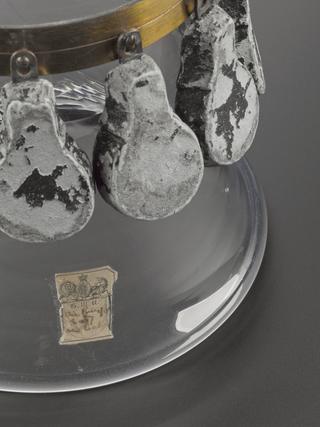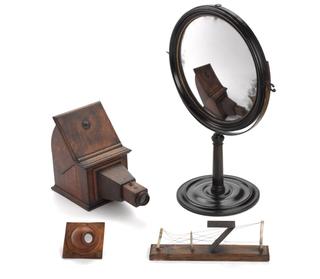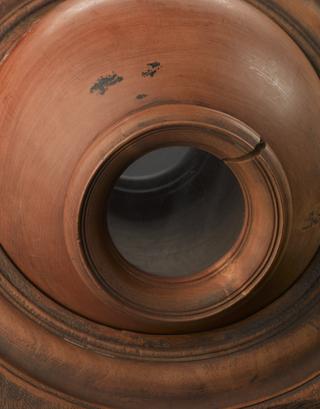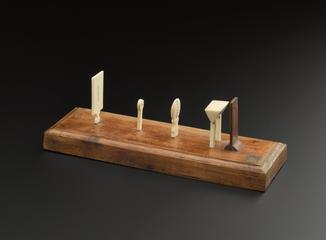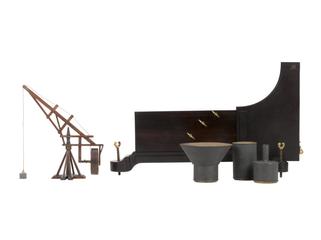
Model of a tipping cart
- Made:
- circa 1750
Model of a tipping cart. Probably from the collection of Stephen Demainbray.
This is a model of a tipping cart which is made of pearwood and uses broad wheels. It forms part of the King George III Collection of scientific instruments which originally belonged to Stephen Demainbray, an itinerant lecturer on 'Experimental Philosophy' between 1749 and 1769, and tutor to the future King George III, before they became amalgamated with the King's own collection. Along with other model carts it represents Demainbray's contribution to one hotly debated issue - the optimum design of carts and cartwheels - which followed the passing of the Broad Wheels Act of 1753 because the state of the roads was very poor. The width of wheel rims proved to be the most contentious element of the 'road debate' during the 1750s. Large broad-wheeled vehicles were slower and tended not to churn the roads as much as vehicles with smaller narrow wheels. Consequently they received preferential tolls. By the 1760s about half of the commercial carriers in England were using broad wheels, and by 1773 these wheels were referred to as 'common 9-inch wheels'. For tipping, the front and back panels of this cart are removable and not attached to the sides or base. This allows a load to be tipped out when the body is tilted.
Details
- Category:
- King George III
- Object Number:
- 1927-1931
- Measurements:
-
overall: 7.5591 x 7.0866 x 14.1732 in.; 192 x 180 x 360 mm
- credit:
- King's College, London
